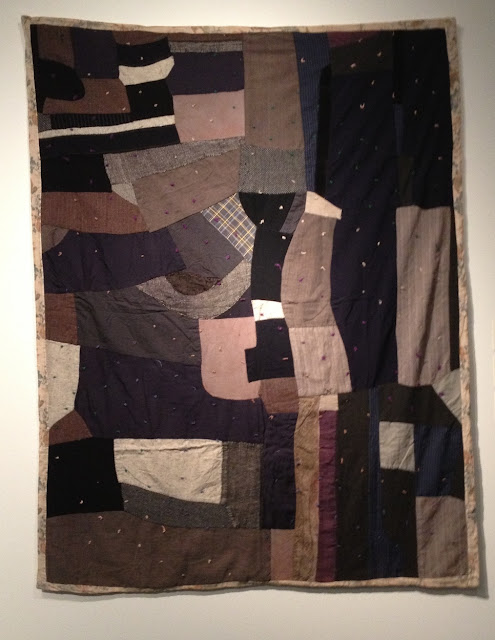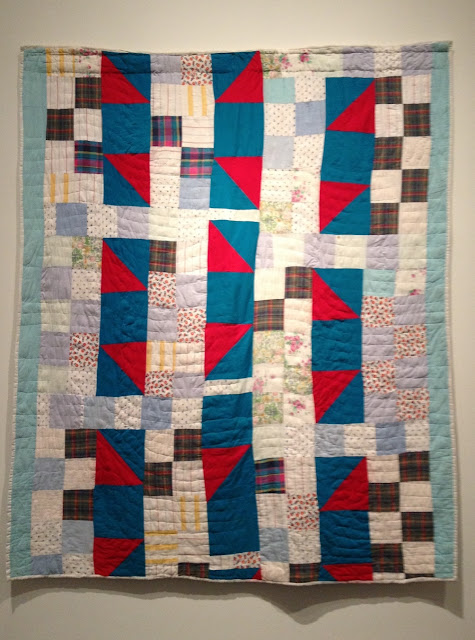Europeans brought the quilting tradition to the US. The European-descended quilters in the Eastern and Mid-western US used more subdued coloring. In contrast, the African American quilters mainly in the South used simple, bold, geometric compositions, often asymmetric with quite intense colors. Everything was hand sewn. Materials were often old jeans, clothing too old to patch any more, flour sacks, and fabric remnants.
Quilting has become more popular again in the US, but most people use machines to make quilts nowadays.
My interest in quilts grew after reading Jennifer Chiaverini's novels in the Elm Creek Quilt series. See: http://elmcreek.net/ I was particularly fascinated in these books by the use of quilts by the Underground Railroad to help move slaves to Canada.
I took a lot of photos with my IPhone. I hope you enjoy them.
Rectangular and blocks were quite common. The quilt stitching in each block holds the front and back (and often the filling) together.
This quilt was high up on the wall, hence the weird angle of the photo. I really liked the horizontal lines on the left and the vertical ones in the center and right.....also, the black sections juxtaposed against the pink.
This one was beautiful. The red ties in each square went through all the fabric and held the material together.
The red was not mounted on top of the beige/brown horizontal stripes but sewn together with it. The bold stripes in the red came from a patterned cloth. (see below). Note the hand stitching below, close together to hold the stuffing in the quilt.
It was amazing to realize that the quilt above was all done by hand, with the circles, arcs, triangles, and rectangles, which fit together so well. Some of the blues are from denim jeans.
 |
| Multilayered close up of Pine burr quilt below... |
 | ||
| Pine Burr Quilt |
 |
| Denim quilt |
Bold, strong quilt! It would have been pretty amazing to have on my bed!
Quite symmetrical, with very bold colors!
Close up of the quilt above. Look at all the stitching around each diamond!
 | |
| Close-up of tulip quilt, with lots of tulips |
Beige in the center was a strong focal point, and brightened the whole quilt.
Note stitching in close up of quilt above.
What do you see in the quilt below?
 |
| Close up of above quilt with red stitches |
 | ||
| Egg Timer Quilt |
And as we walked out, I saw the following chair structure below us:
Yes, they were normal sized chairs!
And in the gift shop, a funny but practical item! Yes, it is a binky/מוצץ


























































